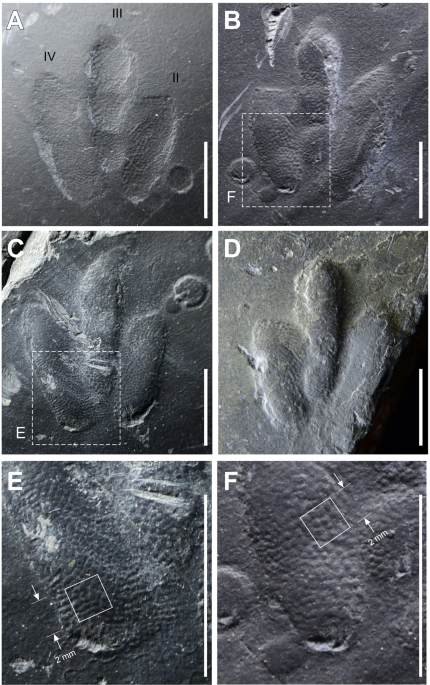Chemical synthesis rewriting of a bacterial genome to achieve design flexibility and biological functionality
Jonathan E. Venetz, Luca Del Medico, Alexander Wölfle, Philipp Schächle, Yves Bucher, Donat Appert, Flavia Tschan, Carlos E. Flores-Tinoco, Mariëlle van Kooten, Rym Guennoun, Samuel Deutsch, Matthias Christen, and Beat Christen
PNAS published ahead of print April 1, 2019
Edited by David Baker, University of Washington, Seattle, WA, and approved March 6, 2019 (received for review October 29, 2018)
Sequence design flexibility within rewritten C. eth-2.0 genes.
Significance
The fundamental biological functions of a living cell are stored within the DNA sequence of its genome. Classical genetic approaches dissect the functioning of biological systems by analyzing individual genes, yet uncovering the essential gene set of an organism has remained very challenging. It is argued that the rewriting of entire genomes through the process of chemical synthesis provides a powerful and complementary research concept to understand how essential functions are programed into genomes.
Abstract
Understanding how to program biological functions into artificial DNA sequences remains a key challenge in synthetic genomics. Here, we report the chemical synthesis and testing of Caulobacter ethensis-2.0 (C. eth-2.0), a rewritten bacterial genome composed of the most fundamental functions of a bacterial cell. We rebuilt the essential genome of Caulobacter crescentus through the process of chemical synthesis rewriting and studied the genetic information content at the level of its essential genes. Within the 785,701-bp genome, we used sequence rewriting to reduce the number of encoded genetic features from 6,290 to 799. Overall, we introduced 133,313 base substitutions, resulting in the rewriting of 123,562 codons. We tested the biological functionality of the genome design in C. crescentus by transposon mutagenesis. Our analysis revealed that 432 essential genes of C. eth-2.0, corresponding to 81.5% of the design, are equal in functionality to natural genes. These findings suggest that neither changing mRNA structure nor changing the codon context have significant influence on biological functionality of synthetic genomes. Discovery of 98 genes that lost their function identified essential genes with incorrect annotation, including a limited set of 27 genes where we uncovered noncoding control features embedded within protein-coding sequences. In sum, our results highlight the promise of chemical synthesis rewriting to decode fundamental genome functions and its utility toward the design of improved organisms for industrial purposes and health benefits.
Caulobacter crescentus chemical genome synthesis genome rewriting synonymous recoding de novo DNA synthesis
Footnotes
↵1To whom correspondence may be addressed. Email: matthias.christen@imsb.biol.ethz.ch or beat.christen@imsb.biol.ethz.ch.
Author contributions: M.C. and B.C. designed research; J.E.V., L.D.M., A.W., P.S., Y.B., D.A., F.T., C.E.F.-T., M.v.K., R.G., and S.D. performed research; J.E.V., L.D.M., M.C., and B.C. analyzed data; and J.E.V., M.C., and B.C. wrote the paper.
Conflict of interest statement: Eidgenössische Technische Hochschule holds a patent application (WO2017085249A1) with M.C. and B.C. as inventors that covers functional testing of synthetic genomes. M.C. and B.C. hold shares from Gigabases Switzerland AG.
This article is a PNAS Direct Submission.
Data deposition: The sequence of the C. eth-2.0 genome reported in this paper has been deposited in the National Center for Biotechnology Information database (GenBank accession no. CP035535).
Copyright © 2019 the Author(s). Published by PNAS.
This open access article is distributed under Creative Commons Attribution-NonCommercial-NoDerivatives License 4.0 (CC BY-NC-ND).


 ), in particular nitrate (NO
), in particular nitrate (NO ) and nitrite (NO
) and nitrite (NO ), have been invoked in diverse origins‐of‐life chemistry, from the oligomerization of RNA to the emergence of protometabolism. Recent work has calculated the supply of NO
), have been invoked in diverse origins‐of‐life chemistry, from the oligomerization of RNA to the emergence of protometabolism. Recent work has calculated the supply of NO from the prebiotic atmosphere to the ocean, and reported steady‐state [NO
from the prebiotic atmosphere to the ocean, and reported steady‐state [NO ] to be high across all plausible parameter space. These findings rest on the assumption that NO
] to be high across all plausible parameter space. These findings rest on the assumption that NO is stable in natural waters unless processed at a hydrothermal vent. Here, we show that NO
is stable in natural waters unless processed at a hydrothermal vent. Here, we show that NO is unstable in the reducing environment of early Earth. Sinks due to UV photolysis and reactions with reduced iron (
is unstable in the reducing environment of early Earth. Sinks due to UV photolysis and reactions with reduced iron ( ) suppress [NO
) suppress [NO ] by several orders of magnitude relative to past predictions. For pH= 6.5 ‐ 8 and T=0‐50°C, we find that it is most probable that [NO
] by several orders of magnitude relative to past predictions. For pH= 6.5 ‐ 8 and T=0‐50°C, we find that it is most probable that [NO ]<1 alt="urn:x-wiley:ggge:media:ggge21866:ggge21866-math-0020" class="section_image" img="" nbsp="" src="https://wol-prod-cdn.literatumonline.com/cms/attachment/2a0116a6-29d1-44f7-b669-6d2697d1616e/ggge21866-math-0020.png" style="border-style: none; box-sizing: border-box; max-width: 100%; vertical-align: middle;">M in the prebiotic ocean. On the other hand, prebiotic ponds with favorable drainage characteristics may have sustained [NO
]<1 alt="urn:x-wiley:ggge:media:ggge21866:ggge21866-math-0020" class="section_image" img="" nbsp="" src="https://wol-prod-cdn.literatumonline.com/cms/attachment/2a0116a6-29d1-44f7-b669-6d2697d1616e/ggge21866-math-0020.png" style="border-style: none; box-sizing: border-box; max-width: 100%; vertical-align: middle;">M in the prebiotic ocean. On the other hand, prebiotic ponds with favorable drainage characteristics may have sustained [NO ]≥1μM. As on modern Earth, most NO
]≥1μM. As on modern Earth, most NO on prebiotic Earth should have been present as NO
on prebiotic Earth should have been present as NO  , due to its much greater stability. These findings inform the kind of prebiotic chemistries that would have been possible on early Earth. We discuss the implications for proposed prebiotic chemistries, and highlight the need for further studies of NO
, due to its much greater stability. These findings inform the kind of prebiotic chemistries that would have been possible on early Earth. We discuss the implications for proposed prebiotic chemistries, and highlight the need for further studies of NO kinetics to reduce the considerable uncertainties in predicting [NO
kinetics to reduce the considerable uncertainties in predicting [NO ] on early Earth.
] on early Earth.

